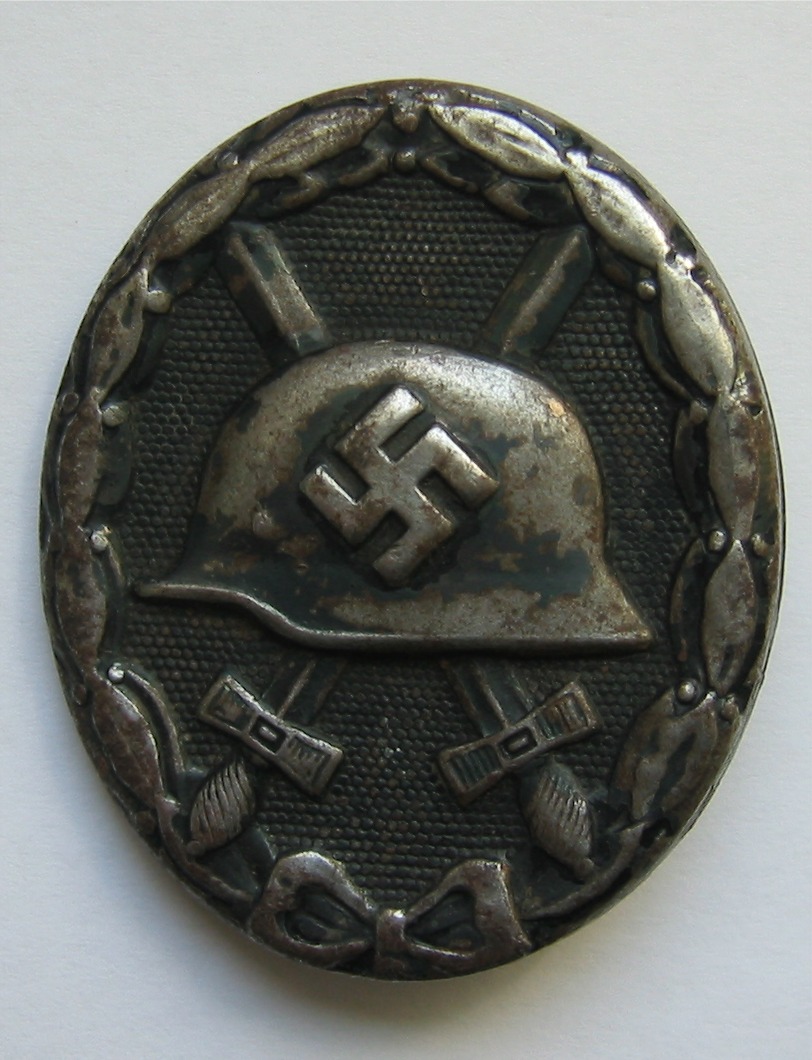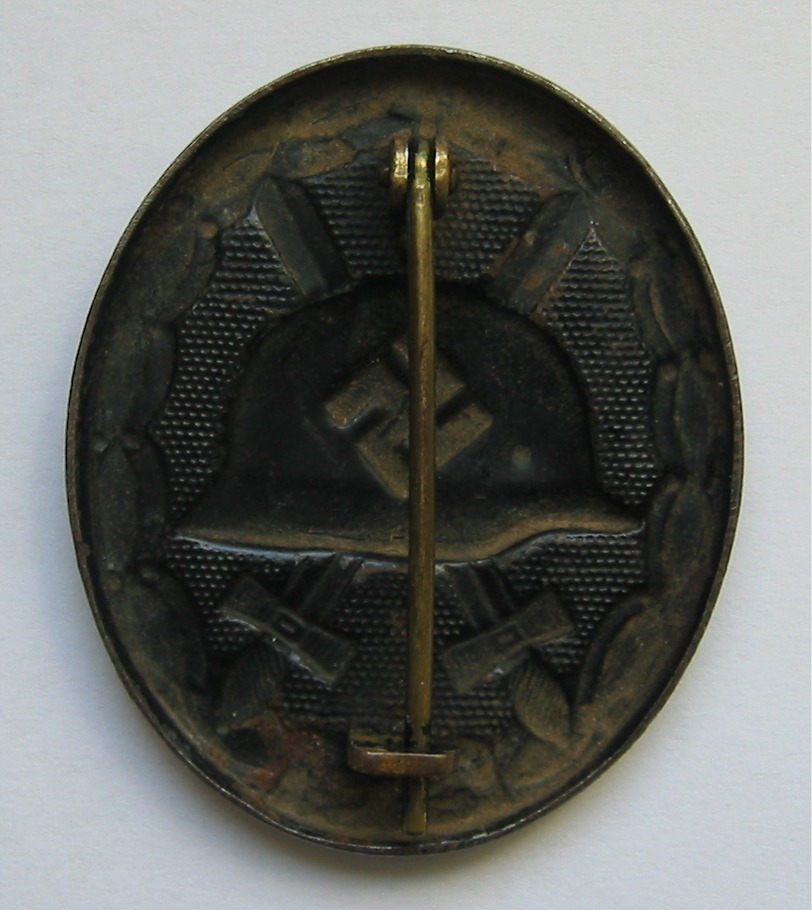German Wound Badge Second World War:
The equivalent award in the German Army for both World Wars was the Wound Badge.
First instituted on the 1st September 1939, the Verwundeten-Abzeichen or Wound Badge was awarded to officers and men of all branches of the Wehrmacht and Waffen-SS, the auxiliary service organizations and after 1943, to civilians wounded in air raids. As in the First World War there were three grades of wound badge; black, silver and gold.
The Black Wound Badge was awarded to those wounded once or twice by hostile action or air raid or wounded from frost-bite in the line of duty.
The Silver Wound Badge was awarded to those wounded three or four times by hostile action or air raid, or if they lost either a hand or foot via hostile action, or an eye via hostile action, or partial loss of hearing via hostile action, or brain damage via hostile action, or facial disfigurement via hostile action.
The Gold Wound Badge was awarded to those wounded five times or more by hostile action, or being total blind from hostile action, or being severely brain damaged as a result of hostile action, or for being killed in action.
A special wound badge was presented to those wounded in the assassination attempt on Hitler and 21 others on the 20th July 1944 at the Wolf's Lair at Rastenberg, East Prussia. Issued in black, silver and gold they have the date "20 JULI 1944" and Hitler's signature on them. The background on these badges is always solid. Very rare as to there being only 100 produced by C.E. Juncker of Berlin.
All versions of the Wound Badge were worn on the lower left breast of the uniform or tunic below all other awards, if any were present. A cloth version of the Wound Badge in Black is believed to also have been made, but this would not have been worn on the uniform or tunic and was most likely for use on sport or work attire. When in civilian dress, a stick pin with a miniature wound badge in the appropriate colour was worn.
The badge shown is a genuine Second World War black Wound Badge. Upwards of five million wound badges (of all grades) are believed to have been awarded.
Wound Badge 3rd Grade (Front)

